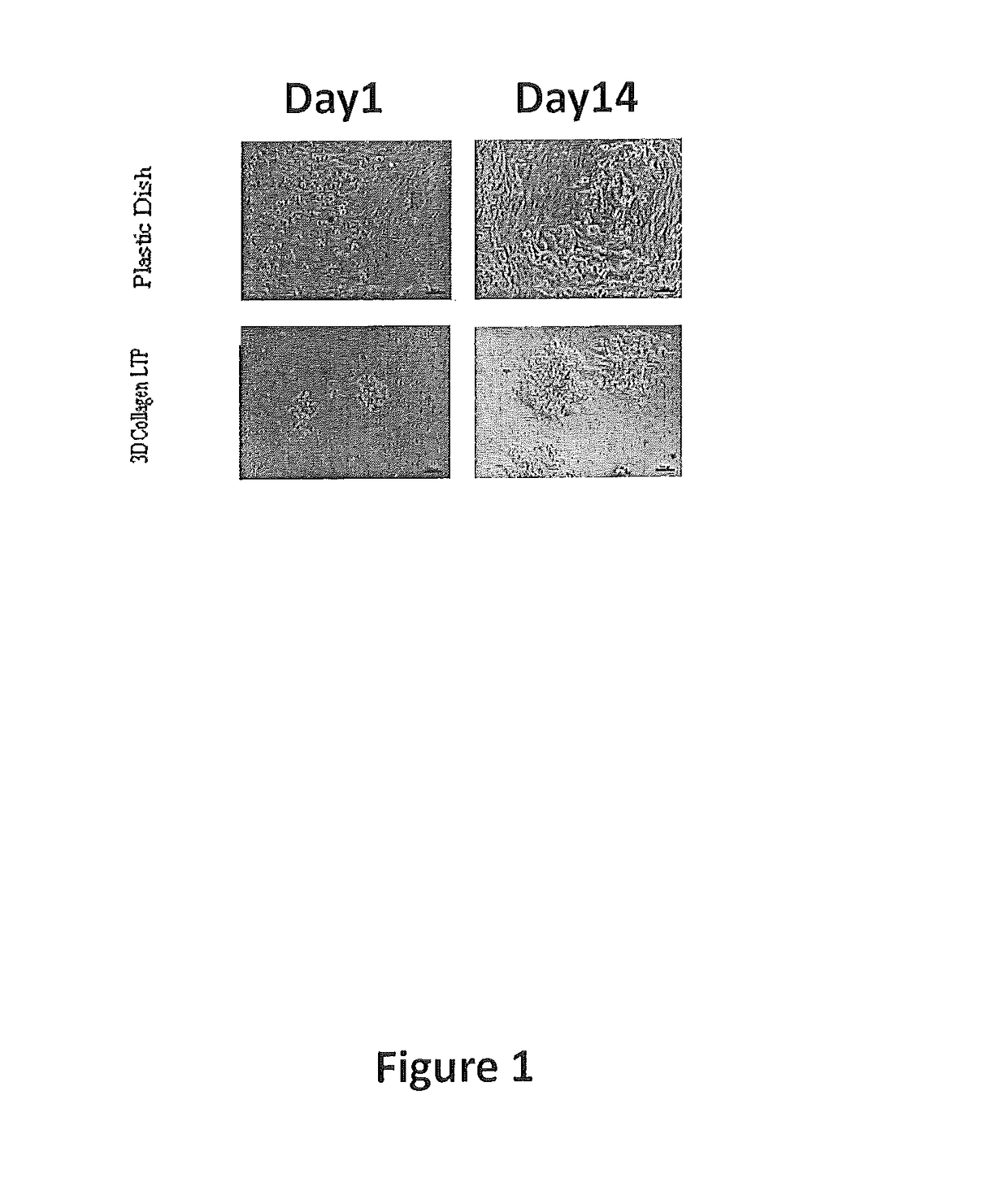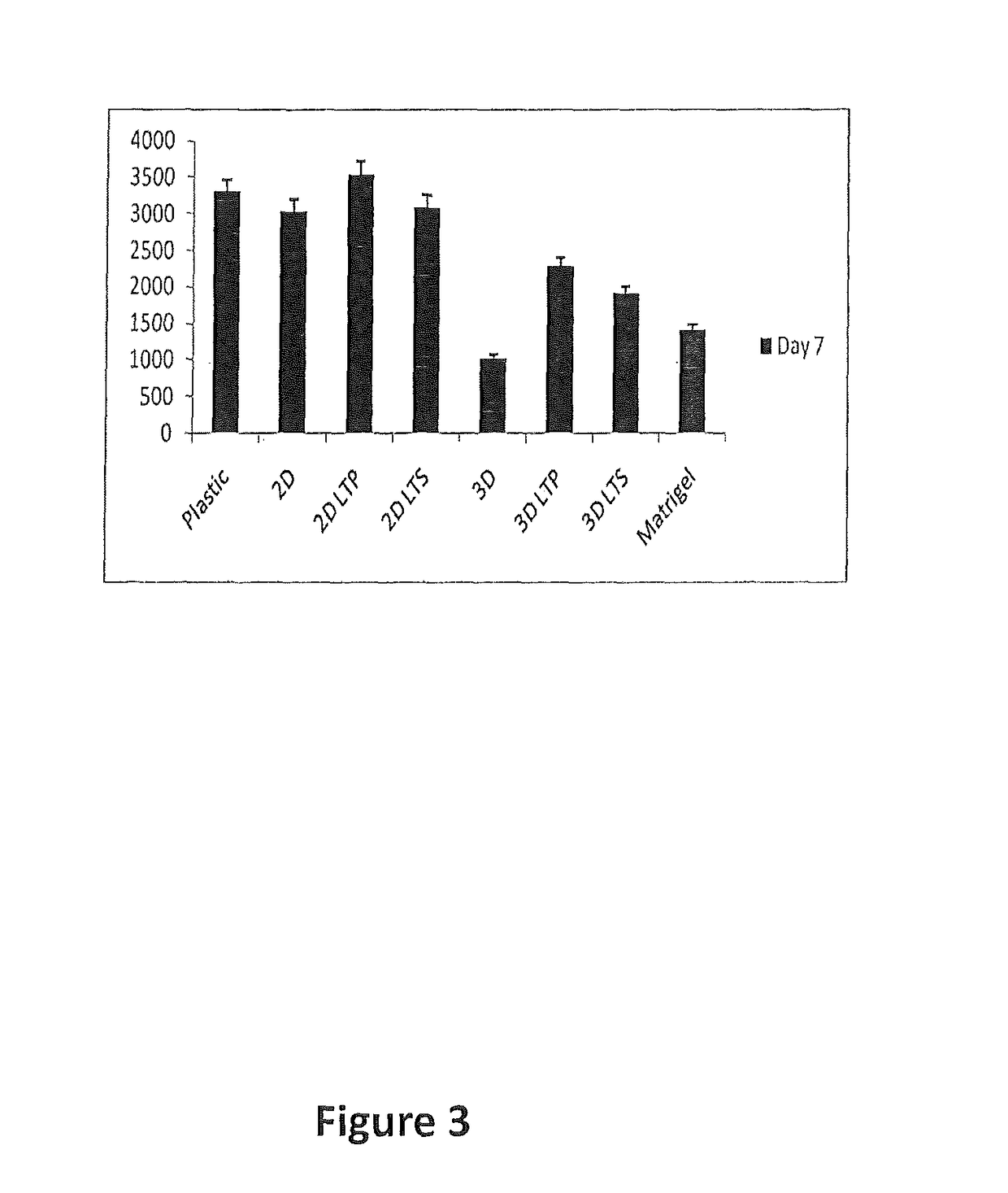Tissue-specific extracellular matrix with or without tissue protein components for cell culture
a cell culture and tissue protein technology, applied in the field of tissue-specific extracellular matrix with or without tissue protein components for cell culture, can solve the problems of reducing the ability of liver cells to study regenerative properties and basic functions in vitro, affecting the regenerative effect of liver cells, so as to achieve the effect of maintaining cellular function and maintaining cellular function
- Summary
- Abstract
- Description
- Claims
- Application Information
AI Technical Summary
Problems solved by technology
Method used
Image
Examples
experimental examples
[0166]The invention is further described in detail by reference to the following experimental examples. These examples are provided for purposes of illustration only, and are not intended to be limiting unless otherwise specified. Thus, the invention should in no way be construed as being limited to the following examples, but rather, should be construed to encompass any and all variations which become evident as a result of the teaching provided herein.
[0167]Without further description, it is believed that one of ordinary skill in the art can, using the preceding description and the following illustrative examples, make and utilize the compounds of the present invention and practice the claimed methods. The following working examples therefore, specifically point out the preferred embodiments of the present invention, and are not to be construed as limiting in any way the remainder of the disclosure.
example 1
Tissue-Specific Extracellular Matrix for Hep G2 Cell Growth
[0168]The following results are based on the observation that decellularization / oxidation procedures provide an optimal 3-D biological collagen matrix with high porosity and increased pore size with minimal retention of cellular components. The present invention is based on the discovery that each cell type grew best (cell proliferation and differentiation) when cultured on an extracellular matrix (ECM) derived from the same tissue origin as the cell.
[0169]Experiments were designed to further expand the development of such matrices for use in the expansion of human primary hepatocytes. Experiments were also designed to evaluate the interactions between hepatocyte and liver specific ECM with 3-D structure and their role in long-term expansion and functional maintenance of human hepatocytes. The feasibility of developing 3-D liver ECM culture disks was also evaluated. For example, it was investigated whether tissue-specific 3-...
example 2
e Gel Model for Hepatocyte Culture in Drug Development
[0176]Liver tissue displays robust regeneration capability when damaged or injured. However, when liver cells are cultured on 2-D plastic platforms in vitro, these cells quickly lose most of their function. Without wishing to be bound by any particular theory, it is believed that the novel culture system of the invention relating to a 3-D liver tissue gel that contains and preserves growth factors, cytokines, and extracellular compounds derived from the liver tissue provide a favorable environment for liver tumor cells (Hep G2) or normal human hepatocyte growth, and maintain liver function in vitro.
[0177]Experiments were designed to determine whether a tissue gel derived from pig liver is non-toxic to cell growth in vitro and is biocompatible. The effect of 3-D liver tissue (LT) gel on maintaining liver function of hepatocytes in vitro for potential use in drug screen and liver tissue regeneration was assessed. Briefly, Hep G2 ca...
PUM
| Property | Measurement | Unit |
|---|---|---|
| particle size | aaaaa | aaaaa |
| particle size | aaaaa | aaaaa |
| concentration | aaaaa | aaaaa |
Abstract
Description
Claims
Application Information
 Login to view more
Login to view more - R&D Engineer
- R&D Manager
- IP Professional
- Industry Leading Data Capabilities
- Powerful AI technology
- Patent DNA Extraction
Browse by: Latest US Patents, China's latest patents, Technical Efficacy Thesaurus, Application Domain, Technology Topic.
© 2024 PatSnap. All rights reserved.Legal|Privacy policy|Modern Slavery Act Transparency Statement|Sitemap



